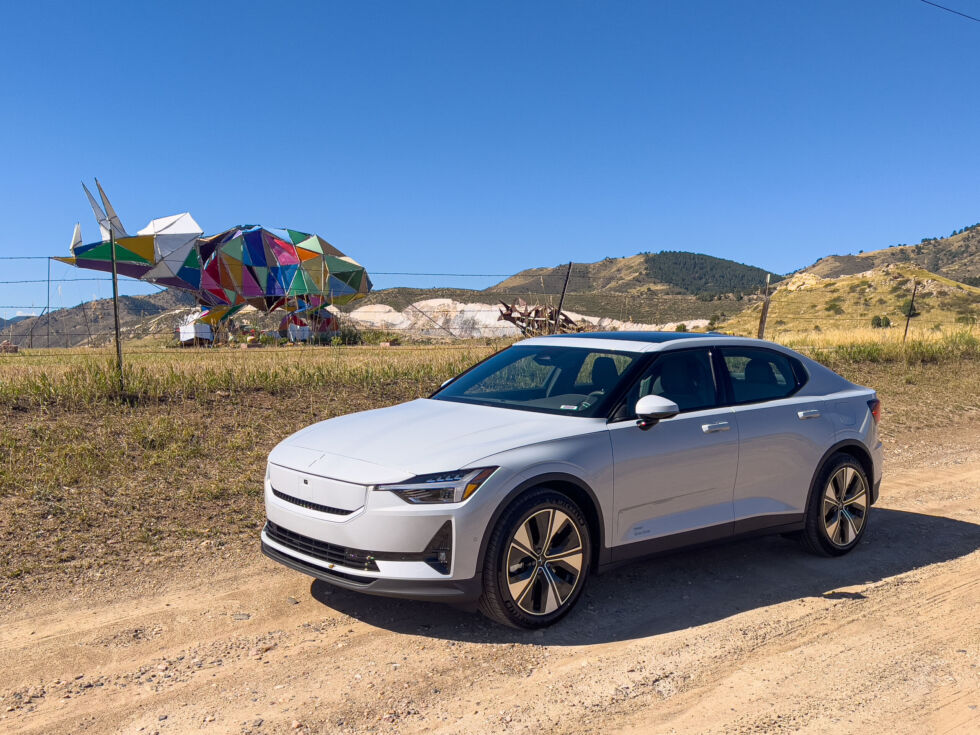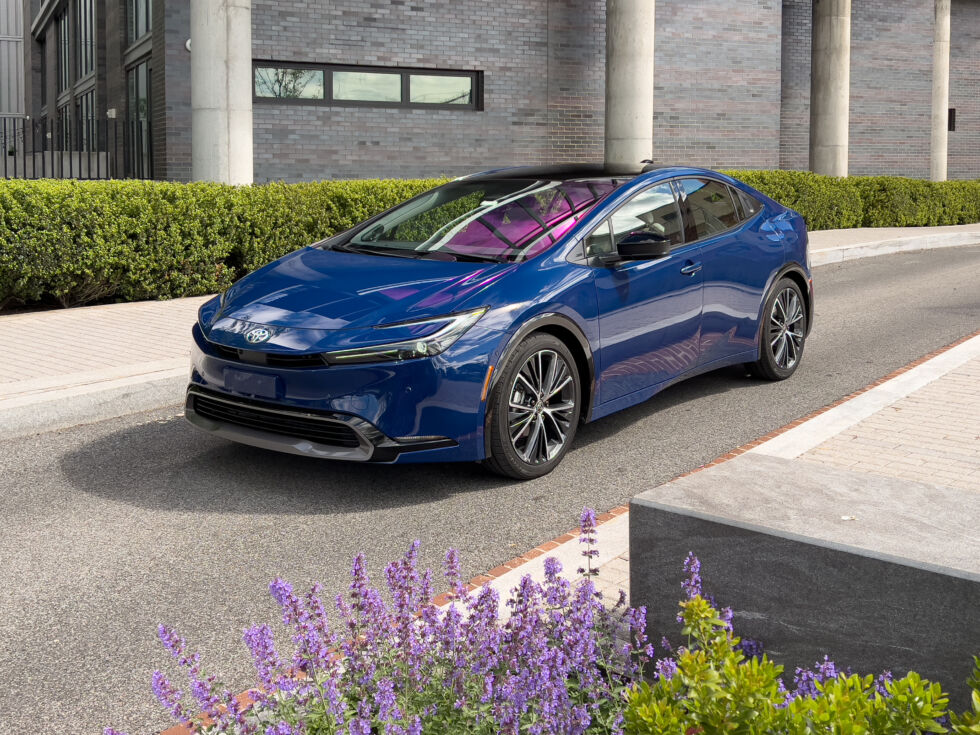Here are the 10 best cars we drove in 2023
fewer EVs than last year —
EVs, hybrids, and a couple of sports cars—here are the 10 best cars we drove in 2023.

Aurich Lawson/Getty Images
The mince pies have been eaten, the crackers have been cracked, and the days are starting to get longer. That means it’s time to look back on the best vehicles we tested in 2023. It has been a good year for electric vehicles, which accounted for almost one in ten new vehicles sold in the US this year. We’ve also driven some rather good hybrids, as well as a pair of sports cars that reminded us that there’s still room for enthusiast cars. Read on to find out which cars made the cut.
1. Polestar 2

Enlarge / You’d be hard-pressed to spot the difference between the 2023 Polestar 2 and the 2024 Polestar 2, but the improvements are obvious when you drive one.
Jonathan Gitlin
In addition to claiming the top spot in 2023, Polestar might also win a prize for the most significant reengineering job for a midlife refresh. Normally, an automaker might restyle the bumpers or change the headlights and tweak the interior when it gives a model its spruce-up after a few years on sale. Not Polestar—it mostly left the cosmetics alone but moved the electric motor in the single-motor Polestar 2 from under the hood, where it drove the front wheels, to the rear, where it now drives the rear wheels.
Combined with a bit of a bump in power (ok, 29 percent more power and 48 percent more torque), the result is a real driver’s car, with better steering and handling than the front-wheel drive Polestar 2 it replaces. There’s more standard equipment than before, and it’s more efficient, too. Only about 30 percent of US Polestar customers have picked the single-motor model in the past, but they’re missing out. The twin-motor car might be faster, but it’s less engaging to drive, has less range, and costs a whole bunch more.
2. Hyundai Ioniq 6

Enlarge / From this angle there’s a hint of the 1994 Lagonda Vignale concept to the Ioniq 6, and that delights me.
Jonathan Gitlin
Korean EVs built using Hyundai Motor Group’s highly competent E-GMP platform took the top spot in 2021 and 2022, but this year Hyundai will have to settle for first runner-up with the Ioniq 6, a somewhat eccentrically styled but highly efficient sedan. Like the other E-GMP EVs, its battery pack operates at 800 V, which means (among other things) it’s capable very fast DC charging—just 18 minutes connected to a 350 kW charger will return the Ioniq 6’s battery pack to 80 percent, which earned this EV the top spot in a recent test of which EVs added the most range the fastest.
The Ioniq 6’s bold exterior is partnered with a more restrained interior that, while not flashy, is spacious and comfortable. And its little whale tail spoiler is a delight, especially when the sun catches the inset prismatic panel on its upper surface.
3. Toyota Prius

Enlarge / The Prius used to be considered quite cool back when it was the first mainstream hybrid on sale. Now in its fifth generation, the new one finally looks really cool.
Jonathan Gitlin
The transformation of the Toyota Prius from fourth- to fifth-generation would be worthy of one of Hans-Christian Anderson’s fairy tales. Out went a weird-looking car that appeared to have been designed by two entirely separate teams that then crashed their creations together; in came a super-sleek replacement with a more-steeply raked windshield than a Lamborghini Huracan.
Lower and wider than before, the dramatic-looking Prius is still all about fuel efficiency despite the makeover. The engine has grown slightly in capacity, there’s a lithium ion traction battery in place of the previous car’s NiCad pack, and electric all-wheel drive is an option now too. But the real headline is 57 mpg (4.13 L/100 km)—assuming you picked a Prius on the smaller wheels.
In fact, we tested two different Prius variants in 2023, the parallel hybrid and the slightly more expensive plug-in hybrid, which features a bigger battery pack and about 35 miles of electric range. And since I can’t pick which one of the two I prefer, I’m counting them both.
Here are the 10 best cars we drove in 2023 Read More »
